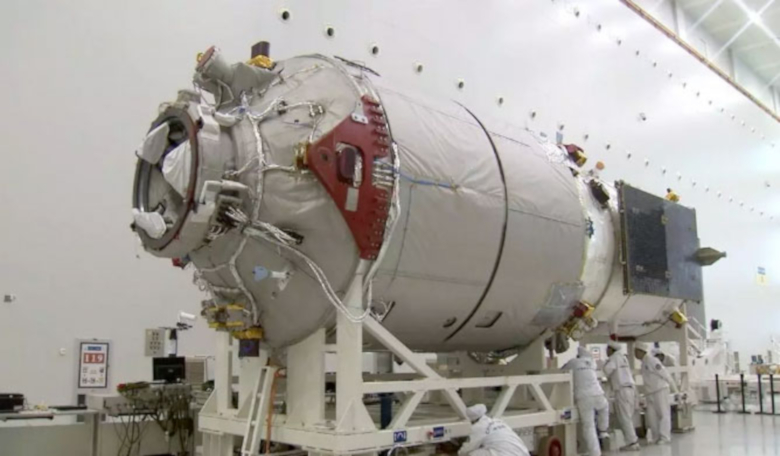China is aiming to launch a new-generation spaceship next month that will eventually ferry astronauts to its future space station and far beyond said the country’s state media this week.
The experimental spacecraft is currently being tested at the Wenchang Space Launch Center on the coast of south China's island province of Hainan and will launch without a crew onboard in mid to late April, Xinhua news agency reported, citing the China Manned Space Agency (CMSA).
The spacecraft, which will be larger than China's current Shenzhou crewed spaceship, will be lofted to space on the maiden flight of the Long March-5B carrier rocket, a variant of the Long March-5, China's largest carrier rocket. The craft is also designed to be reusable.
As the new craft will be used in both low-Earth orbit and for deep-space exploration, it will need to withstand the challenges that interplanetary travel brings with it, such as higher speeds and improved heat shielding performance.
The spacecraft’s development team have been working on new materials and a new structure to make the heat shielding capacity three to four times greater than that of the Shenzhou spacecraft, said the news agency. The upcoming mission will also test the landing process with multiple parachutes and airbags for safety.
"The mission will test the key technologies of the new manned spaceship such as the control of its re-entry into the atmosphere, heat shielding and recovery technology," said Yang Qing, a designer of the spacecraft with the China Academy of Space Technology.
Despite current conditions in the wake of the coronavirus pandemic, the development team are pulling out all the stops for the mission, said the CMSA.
The as yet-unnamed craft is designed to adapt to multiple tasks. It also encompasses a service capsule and a return capsule, the latter of which could be reused up to 10 times.
It is 8.8 metres in length and at takeoff weighs 21600 kilograms (21.6 tonnes) reports the news agency. The combined length of Shenzou's three modules, which was designed to support its crewed spaceflight program, is 8.24 metres.
It will be able to carry six astronauts or a crew of three if a cargo payload up to 500 kilograms is carried on board. In comparison, China’s Tianzhou-1 cargo spacecraft that was developed to resupply the country’s space station, can carry a cargo of 6,500 kilograms.
Tianzhou-1, whose name literally translates as ‘Heavenly Ship’, was first launched on the Long March 7 rocket from Wenchang on 20 April, 2017, however it was not designed for return journey to Earth.
After accomplishing a trio of refuelling sequences and undocking with China's orbiting Tiangong-2 space lab, the robotic cargo ship plunged into Earth's atmosphere and burned up.
Conversely, the new spacecraft, says the news agency, could return with cargos such as scientific experiments, samples and products made in space.











